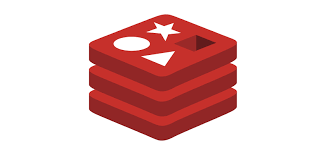To learn more about Queue_Connection with Redis, check out our latest blog. At Bluehoster, our Server Management Service is here to help you with any issues.
Overview
- Mastering Queue Connection with Redis: A Complete Guide
- What is a Queue?
- Redis as a Queue Management Tool
- Using Redis Queues in Laravel
- Troubleshooting Redis Queue Connection Issues
- Best Practices for Redis Queues
- Conclusion
Mastering Queue_Connection with Redis: A Complete Guide
In today’s web applications, efficient background task management is crucial for optimal performance. Redis, a high-speed in-memory data store, is essential for effective queue handling. This article explores how Redis queues function, their integration with Laravel, and how to fix common queue connection problems.

What is a Queue?
A queue is a data structure that operates on a FIFO (First In, First Out) basis. Tasks are placed at one end of the queue and processed in the order they arrive. Queues are widely used for offloading time-intensive tasks, keeping applications responsive.
Redis as a Queue Management Tool
What is Redis?
Redis is a fast, open-source, in-memory key-value store that excels in managing tasks within a queue due to its high-speed operations and support for list data structures, which are the foundation of its queue functionality.
Redis Queue Basics
Redis queues use the list data structure with commands to add and process tasks:
- LPUSH: Adds a task to the beginning of the queue.
- RPOP: Removes and returns a task from the end of the queue.
- Redis queues are frequently used to handle asynchronous tasks in applications, such as email sending, image processing, and data exporting.
Using Redis Queues in Laravel
Laravel has built-in support for Redis queues, making them easy to implement and manage. Here’s how to get started:
Configure Redis in Laravel:
Set the QUEUE_CONNECTION to redis in your .env file:
QUEUE_CONNECTION=redis
Update queue.php:
Modify the config/queue.php file:
'redis' => [
'driver' => 'redis',
'connection' => 'default',
'queue' => 'default',
'retry_after' => 90,
'block_for' => null,
],Run the Queue Worker:
Start processing jobs using:
php artisan queue:work
Clear Config Cache:
Clear the cache after changes to apply updates:
php artisan config:clear
Troubleshooting Redis Queue Connection Issues
Here are common causes and solutions if you encounter issues:
1. Incorrect Configuration
Verify that the Redis host, port, and password match your setup.
Example in Python:
import redis
r = redis.StrictRedis(host='localhost', port=6379, db=0, password='your_password')
2. Firewall or Network Issues
Make sure the default Redis port (6379) is open in your firewall.
Use redis-cli to test connectivity:
redis-cli ping
3. Redis Server Not Running
Install and start the Redis server:
sudo apt-get install redis-server
sudo systemctl start redis-server4. Permission Errors
Make sure your application has proper access rights to Redis.
5. Queue Name Conflicts in Redis Cluster
When using a Redis cluster, ensure queue names include a hash tag to keep keys in the same hash slot:
'queue' => '{default}',
6. PHP Extensions Issue
Reinstall the Redis PHP extension:
sudo apt-get install php-redis
Best Practices for Redis Queues
Monitor Queue Health: Utilize tools such as Laravel Horizon or Redis monitoring commands.
Optimize Queue Retry Logic: Set appropriate retry_after values to prevent delays.
Scale Workers: Employ multiple queue workers to handle large volumes of tasks.
Back Up Configurations: Regularly back up Redis and Laravel configurations.
[Need more information? Contact us for further assistance.]
Conclusion
Redis queues greatly simplify background task management, providing speed, scalability, and dependability. Properly configuring Laravel with Redis and addressing common issues ensure smooth application operations. Whether you’re a beginner or an expert, mastering Redis queues will enhance your application’s performance.
var google_conversion_label = “owonCMyG5nEQ0aD71QM”;